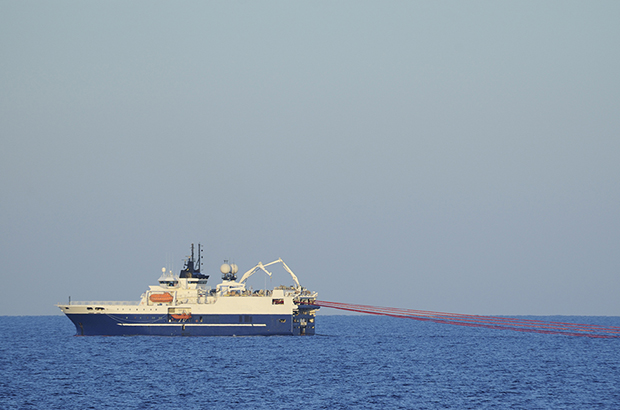As human activities in the marine area increase so does underwater noise. Understanding and mitigating the impact of this is an important part of the sustainable development of our seas and protecting the marine environment for future generations.
Underwater noise from human activities can affect marine organisms, from fish to marine mammals, in a variety of ways. Noise can mask sounds they use to communicate and find food. It can cause physical injury and even death.
Noise is recognised as a pollutant as part of the Marine Strategy Framework Directive (MSFD). This also states noise should be included as part of Environmental Impact Assessments (EIA) when consenting development in the marine area.
Understanding when and where noisy activities is required to inform research on the impacts of noise, particularly on vulnerable species like cetaceans.
Marine Noise Registry launched
Defra and JNCC have developed the Marine Noise Registry (MNR) to record human activities in UK seas that produce loud, low to medium frequency (10Hz – 10kHz) impulsive noise.
The MNR is a data input space for industry and regulators. It collects estimated location and date data on noisy activities (during the planning stages) and actual location and date data (after the activity has been completed).
The initial purpose of using the MNR to record manmade impulsive noise is to quantify the pressure on the environment by providing an overview of relevant impulsive sound sources. This will help define the baseline level for impulsive noise in UK waters as part of other research.
Some of the activities included on the MNR are:
- Impact pile driving
- geophysical surveys (seismic, sub bottom profiling and multibeam echosounders)
- explosives
- military related sonar
- certain acoustic deterrent devices
The MNR also collects, where available, source property data (in line with TG noise guidance) including frequency, maximum airgun volume, maximum hammer energy, TNT equivalent, sound pressure level and sound exposure level.
Maps will be produced annually showing the spread of activities in ‘pulse block days’ (the number of days within a set period of time that impulsive noise has been generated within each UK oil and gas licensing block). These maps will be available from the Government's Open Data website.
Data in the Registry will also be fed into a Europe-wide registry through OSPAR (the Oslo and Paris Convention for the Protection of the North-East Atlantic).
The MNR and marine licence requirements
Requirement to use the MNR is explained in more detail on the MMO website.
While this will be compulsory for some marine licence applicants with projects in band 3 (larger or more complex projects and where EIA may be required) we also hope developers will use the system voluntarily.
We recommend voluntary notification prior to some activities such as seismic survey in order to check whether this is likely to disturb a protected species, which may be an offence.
Data added to the MNR will be publicly available for use by others and may be of wider benefit. Any information added will contribute to a greater understanding of underwater noise and possible improvements in the management of this in future.
We hope you find it useful.

2 comments
Comment by David Snelson posted on
This is a good initiative. But, at the risk of over complicating it, I would suggest that the effect of impulsive noise needs to be understood relative to the constant background noise of shipping i.e. does shipping 'drown out'[ impulsive noise, and against the background of sound propagation in the sea which is highly complex. i.e. some impulsive noise may never propagate to a particular area where particular species live because of bending of the sound waves and sea bed topography.
Comment by Amy Wardlaw, MMO posted on
Thanks for your comments David - as this isn't our system we'll pass these on to the relevant organisations.